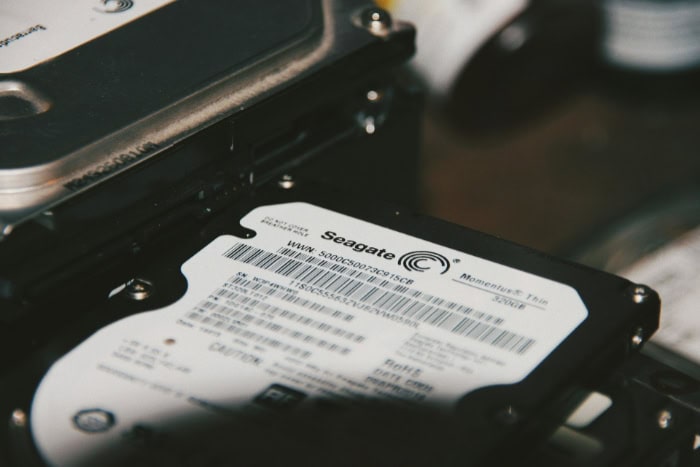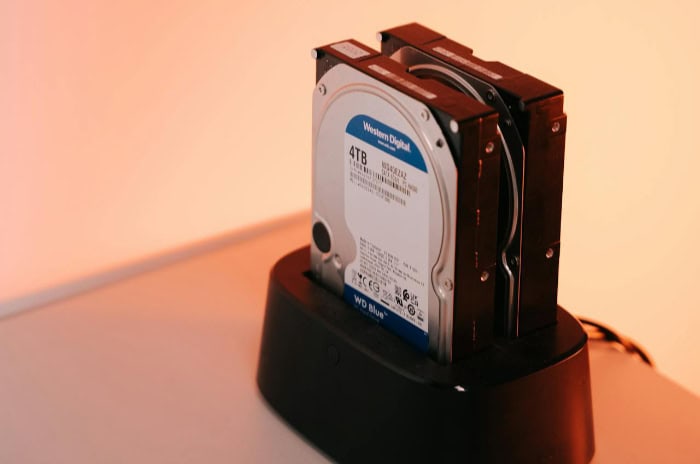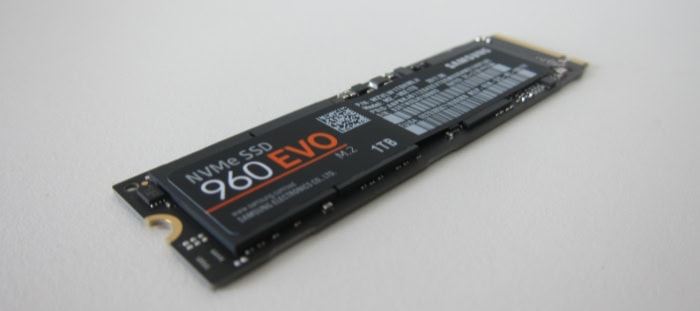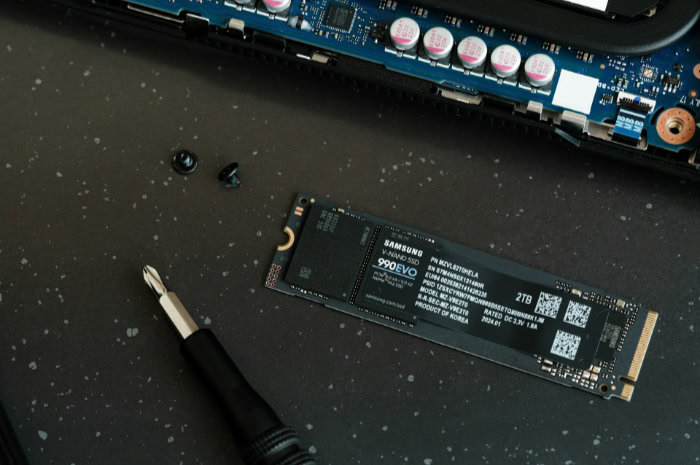How to Choose a Hard Drive: Simplified for Every User

A hard drive is the backbone of your data storage, influencing performance, reliability, and overall user experience. Picking the right one can feel tricky, but it all comes down to understanding your needs.
Are you looking for speed to handle demanding applications or plenty of storage for large files? Perhaps you need something durable and portable for backups on the go.
By weighing factors like capacity, speed, compatibility, and budget, you can narrow your options and avoid common pitfalls.
Understanding Drive Types and Their Use Cases
Choosing the right hard drive begins with grasping the differences between traditional hard disk drives (HDDs) and modern solid-state drives (SSDs). Both options serve the same basic purpose of storing data, but they differ significantly in how they operate and what they offer.
HDD vs. SSD
Hard disk drives (HDDs) are the classic option for data storage and have been around for decades. They use spinning platters and a mechanical arm to read and write data, much like a record player.
One of their standout advantages is cost-effectiveness. If you need large amounts of storage without breaking the bank, HDDs are the way to go.
This makes them an excellent choice for storing media libraries, backups, or files that don’t require frequent access. However, the mechanical components in HDDs make them slower than their SSD counterparts and more prone to damage from drops or impacts. Additionally, HDDs can generate audible noise due to their moving parts, which some users may find bothersome.
On the other hand, solid-state drives (SSDs) represent a newer, more advanced technology. Unlike HDDs, SSDs have no moving parts.
They rely on flash memory to store data, allowing for significantly faster read and write speeds. This means quicker boot times, faster application loading, and improved performance overall.
SSDs are especially valuable for operating systems, gaming, or professional tasks like video editing, where speed is a priority. Furthermore, their lack of moving parts makes them more durable and silent compared to HDDs.
The trade-off is their higher cost per gigabyte, which can make them less appealing for users who need high-capacity storage on a tight budget.
Ideal Scenarios
The choice between HDDs and SSDs ultimately depends on how you plan to use the drive. For gamers or professionals working with demanding software, SSDs shine.
They dramatically reduce load times in games or programs, improving efficiency and user experience. Creative professionals, such as video editors or graphic designers, also benefit from this speed, as large files can be processed much more quickly.
HDDs, however, are still highly relevant. If your goal is to store an extensive collection of photos, music, movies, or other large files, HDDs provide the capacity to do so affordably.
They are also ideal for backing up data that doesn’t need to be accessed frequently, providing a cost-effective solution for long-term storage needs.
Determining the Right Storage Capacity

Selecting the appropriate storage capacity for your hard drive is essential to ensure it aligns with your daily tasks and long-term needs. The right capacity not only allows you to store everything without worry but also prevents you from wasting money on unnecessary space.
Assessing Usage Needs
The amount of storage you need is strongly tied to how you plan to use your hard drive. For basic tasks such as word processing, browsing the web, or storing lightweight applications, a 250GB to 500GB drive is often sufficient.
This capacity is ideal for students or individuals with minimal storage requirements who primarily focus on everyday computing.
For gaming enthusiasts or content creators, the demand for storage increases significantly. Modern video games often take up anywhere from 50GB to over 150GB each, and raw video files for editing can quickly consume hundreds of gigabytes.
In these cases, opting for a drive with a capacity of 1TB or more is recommended. Many gamers and professionals find that drives in the range of 1TB to 2TB provide an excellent balance between capacity and cost, ensuring there’s enough space to handle both current and future requirements.
If your work or hobbies involve extensive media editing, such as working with 4K video files or managing large collections of photos, you may need even more capacity, possibly 4TB or higher. High-capacity drives are ideal for those who handle large datasets or maintain sizable media libraries that need to be accessible at all times.
Future-Proofing
Storage needs can grow over time as software, games, and media content become more complex and demanding. While it might be tempting to purchase the smallest drive that fits your current usage, this can lead to frustration down the line as you run out of space.
Ensuring your hard drive has room for growth can save you from the hassle of frequent upgrades or data migration. For example, if you're a gamer, it's worth anticipating the storage requirements of newer game releases, which are becoming increasingly large.
Similarly, photographers and video editors will find that higher resolutions and advanced file formats require significantly more storage space over time.
That said, it’s also important to avoid overspending on storage you’ll realistically never use. If you know your usage patterns are unlikely to change, there’s no need to buy a 4TB drive when 1TB would suffice.
Balancing current needs with a slight buffer for future growth is the smart way to choose.
External vs. Internal
Another factor to consider is whether you need an internal or external hard drive. Internal drives are built into computers or gaming consoles and provide a permanent storage solution.
They’re ideal for those who need consistent performance and don’t require portability. Internal drives also tend to be more cost-effective for larger storage options, making them suitable for desktops, workstations, or laptops with upgradeable storage bays.
External drives, on the other hand, offer portability and convenience. They are an excellent solution for users who need to transfer data between devices or create backups that can be stored separately for added safety.
Many external drives connect via USB and are easy to use, making them a great choice for people who frequently work across multiple systems or need to safeguard important files. When choosing an external drive, pay attention to its interface (USB 3.0, USB-C), as this affects transfer speed and compatibility with your devices.
Evaluating Performance and Compatibility

When selecting a hard drive, performance and compatibility are critical factors that influence how well the drive integrates with your system and how quickly it can handle tasks. A drive’s speed can significantly impact how fast your computer boots, how quickly files load, and how smoothly applications operate.
Additionally, ensuring that the drive is physically and technologically compatible with your device is essential to avoid installation issues or performance bottlenecks.
Speed Metrics
A hard drive’s speed determines how efficiently it can read and write data. This directly affects tasks such as transferring files, loading software, and gaming performance.
For HDDs, speed is primarily defined by the rotational speed of the platters, measured in RPM (revolutions per minute), and the size of the cache memory. HDDs typically come in two RPM options: 5,400 RPM and 7,200 RPM.
Drives with 5,400 RPM are slower but consume less power and are quieter, making them suitable for basic storage needs or external drives. On the other hand, 7,200 RPM drives are faster, offering quicker access to files, which is beneficial for desktops or workstations handling larger workloads.
SSDs, however, offer a significant leap in speed compared to HDDs due to their reliance on flash memory rather than mechanical components. Their performance is measured in terms of read and write speeds, often expressed in megabytes per second (MB/s).
Entry-level SSDs typically offer speeds around 500MB/s, which is already much faster than HDDs. High-end SSDs, especially those using the NVMe interface, can achieve speeds up to 3,500MB/s or more.
This makes SSDs a superior choice for users who value faster boot times, near-instant application loading, or reduced rendering times in creative workflows.
Interface Types
The interface used by a hard drive determines how data is transferred between the drive and the rest of the system. SATA III is a widely used interface for both HDDs and SSDs, and it supports speeds of up to 6Gbps.
While SATA III is sufficient for most HDDs and provides a noticeable boost for lower-end SSDs, it is slower compared to newer technologies.
NVMe (Non-Volatile Memory Express) is a much faster interface designed for SSDs. It leverages the PCIe (Peripheral Component Interconnect Express) lanes on a motherboard to provide vastly improved data transfer speeds.
NVMe drives are ideal for modern systems and users who need maximum performance, such as gamers or professionals working with large datasets.
For external drives, USB interfaces are the most common connection type. USB 3.0 and USB 3.1 interfaces are fast and widely compatible, with USB-C offering additional benefits like universal compatibility and higher transfer speeds.
Choosing the right interface for an external hard drive ensures that file transfers are quick and efficient, making routine tasks more convenient.
Physical Compatibility
Hard drives come in different form factors, which affect where they can be installed. The most common sizes are 2.5-inch and 3.5-inch drives. A 2.5-inch drive is compact and lightweight, making it ideal for laptops or small form-factor PCs.
These drives are also commonly used in external enclosures due to their portability. In comparison, 3.5-inch drives are larger and are primarily used in desktops because of their higher storage capacity and lower cost per gigabyte.
Another important consideration is compatibility with your motherboard or device. For SSDs, it’s crucial to check for the presence of M.2 slots if you plan to use an NVMe drive.
Additionally, ensure that your system supports the interface of your drive, such as PCIe for NVMe SSDs or SATA for traditional drives. Making sure these connections align with your hardware will save you the frustration of incompatibility and ensure optimal performance.
Prioritizing Reliability and Budget

When choosing a hard drive, reliability and cost are two of the most significant factors to consider. A dependable drive ensures that your data is safe for years to come, while a carefully chosen budget keeps your purchase practical without sacrificing quality where it matters most.
Durability
The durability of a hard drive often comes down to its design and intended use. SSDs are generally more durable than HDDs because they lack moving parts.
This makes SSDs better suited for portable devices or environments where the drive may experience physical shocks, such as being accidentally dropped or jostled during transport. For individuals who often carry laptops or external drives between locations, an SSD offers the peace of mind that your data is less likely to be compromised by wear and tear.
On the other hand, HDDs rely on spinning platters and mechanical arms, which makes them more vulnerable to physical damage. While an HDD is perfectly capable in a stable desktop environment, it’s riskier to rely on one for portable use.
However, HDDs are still a cost-effective choice for tasks like data backups or archival storage, where durability in extreme conditions isn’t a top concern. Using HDDs in stationary setups, such as external desktop enclosures, can help mitigate some of the risks while taking advantage of their affordability.
Brand and Warranty
When selecting a hard drive, the manufacturer’s reputation can be an essential indicator of the product’s reliability. Established brands like Western Digital, Seagate, and Samsung have longstanding track records for producing quality hard drives and often provide detailed specifications, as well as useful software tools for monitoring drive health.
Investing in products from trusted manufacturers ensures that your hard drive has been engineered and tested to meet high standards.
Another aspect to consider is the warranty offered by the brand. A longer warranty period reflects greater confidence from the manufacturer in the durability of their product.
Most SSDs and HDDs offer warranties ranging from two to five years, depending on the model. If you’re purchasing a drive for critical data or professional use, paying attention to warranty terms can provide an added layer of security, as it may cover replacements in the event of failure.
Cost vs. Longevity
The cost of a hard drive often aligns with its performance and durability, so it’s important to allocate your budget based on how the drive will be used. SSDs, while more expensive per gigabyte than HDDs, are a worthwhile investment for critical systems like your operating system drive or projects that require high-speed data handling.
Spending more upfront on an SSD can save time and improve productivity over the long term, making it a preferred choice for primary drives.
HDDs, in contrast, are an economical option for secondary storage, particularly for users who need to store large volumes of data without frequent access. For example, HDDs are ideal for creating backups, housing extensive media libraries, or saving files that don’t require high-speed transfers.
This cost-effective approach allows you to reserve your budget for SSD performance where it truly matters.
It’s also wise to consider the total cost of ownership when evaluating your investment. SSDs, while pricier upfront, often have lower power consumption and are less prone to mechanical failure, reducing their long-term replacement or maintenance costs.
HDDs may be cheaper initially but come with a higher likelihood of failure over time, particularly in heavy-use scenarios. Taking these factors into account can help ensure that your storage solution aligns with both short-term affordability and long-term value.
Conclusion
Selecting the right hard drive requires balancing performance, capacity, reliability, and budget to suit your specific needs. HDDs and SSDs each have their strengths, with HDDs offering affordable bulk storage and SSDs excelling at speed and durability.
Storage capacity should align with your everyday requirements while accounting for future growth, ensuring you have enough space without unnecessary excess. Performance metrics like speed and interface types, as well as physical compatibility with your device, are critical to achieving optimal functionality.
Reliability and cost-effectiveness are equally important when investing in storage. SSDs are a durable choice for critical systems, while HDDs remain cost-efficient for secondary storage or archiving.
Trusted brands and strong warranties provide added peace of mind, reducing the risks associated with drive failure. By considering these factors carefully, you can confidently choose a drive that enhances your system’s performance and supports your data storage needs over time.


